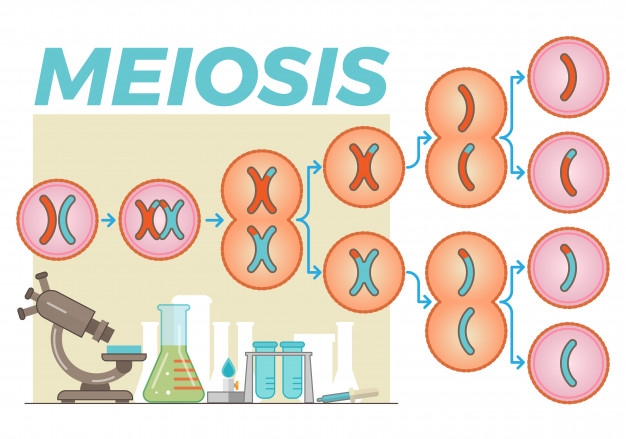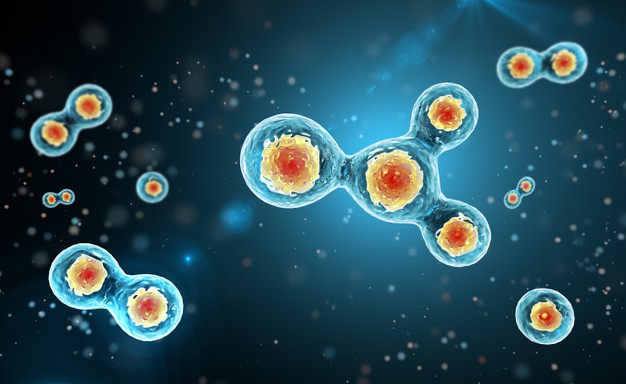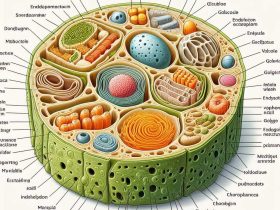What is mitosis?

Mitosis is a kind of cell division that transpires in somatic cells in which each parent cell splits up to form two daughter cells. The number of chromosomes in daughter cells continues the same. The diploid number of chromosomes is present in the parent as well as daughter cells.
Generally, mitosis occurs in the nails and hair throughout our life. It also occurs during development, and once full growth is attained, it stops. It also performs the function of healing wounds and regenerating any defects of the body.
Mitosis ensues in four phases, namely, prophase, metaphase, anaphase, and telophase. During propagation, cell division is prepared. Enzymes are synthesized, and energy is stored. DNA replication and nucleus splitting (karyokinesis) also occur during this phase.
The nuclear material is present as chromatin. Then during the metaphase, chromosomes are categorized in the equator. During anaphase, the chromatids dissociate from each other and move towards the peripheral site. During telophase, a division of the cytoplasm also occurs (cytokinesis), and thus a cell transforms into two daughter cells that have the same genetic material and the same number of chromosomes.
What is meiosis?

It is a type of cell division in which a parent cell is divided into four daughter cells, and the number of chromosomes in daughter cells is half the number of parental cells. This is done in germline cells for sexual reproduction in higher animals.
The main purpose of this type of division is to maintain chromosome numbers in the next generation and to advance genetic variability. During this type of division, there is a similarity between homologous chromosomes, and non-sister chromatids exchange genetic material with each other through the formation and crossing of synapsis. Chiasmata are also formed during this process. Meiosis is performed in two stages, namely, meiosis 1 and meiosis.
Difference between Mitosis and Meiosis:
| Mitosis | Meiosis |
| mitosis is the type of cell division that occurs in somatic cells for growth or some organisms for asexual reproduction | Meiosis is the type of reproduction that occurs in sex cells with the intention of sexual reproduction. |
| The functions of mitosis are cellular growth, body healing, and repair in case of injury and asexual reproduction. | Meiosis functions are gametes formation in sexual reproduction of animals higher in sexual reproduction. |
| It only continues for a few hours and is a simple process. | Meiosis lasts for several days and is very complex. |
| During mitosis, nuclear division (kero-kinesis) occurs during interphase, and division of the cytoplasm (cytokinesis) occurs during telophase | In the process of meiosis, nuclear division occurs in interphase 1 and cytokinesis occurs in both telophase 1 and telophase 2. |
| The phases of mitosis encompass prophase, metaphase, anaphase, and telophase. | Meiosis comes up in two stages: Meiosis 1 and Meiosis 2. |
| In mitosis, the number of chromosomes remains the same in daughter cells. | In meiosis, the number of chromosomes is halved in daughter cells. |
| One cell splits up to form two daughter cells. | One cell splits up to form four daughter cells. |
Main difference
Mitosis is the type of cell division in which each daughter cell divides to form two daughter cells while meiosis has four daughter cells forming one.
Mitosis is performed by somatic cells, while meiosis occurs in cells.
In mitosis, many chromosomes in daughter cells are stable, while in meiosis, the number of chromosomes is reduced to half.
In mitosis, there is no crossing over and transfer of genetic material whereas meiosis involves the transfer of genetic material.
The purpose of mitosis is development and treatment while meiosis is sexual reproduction.






Leave a Reply